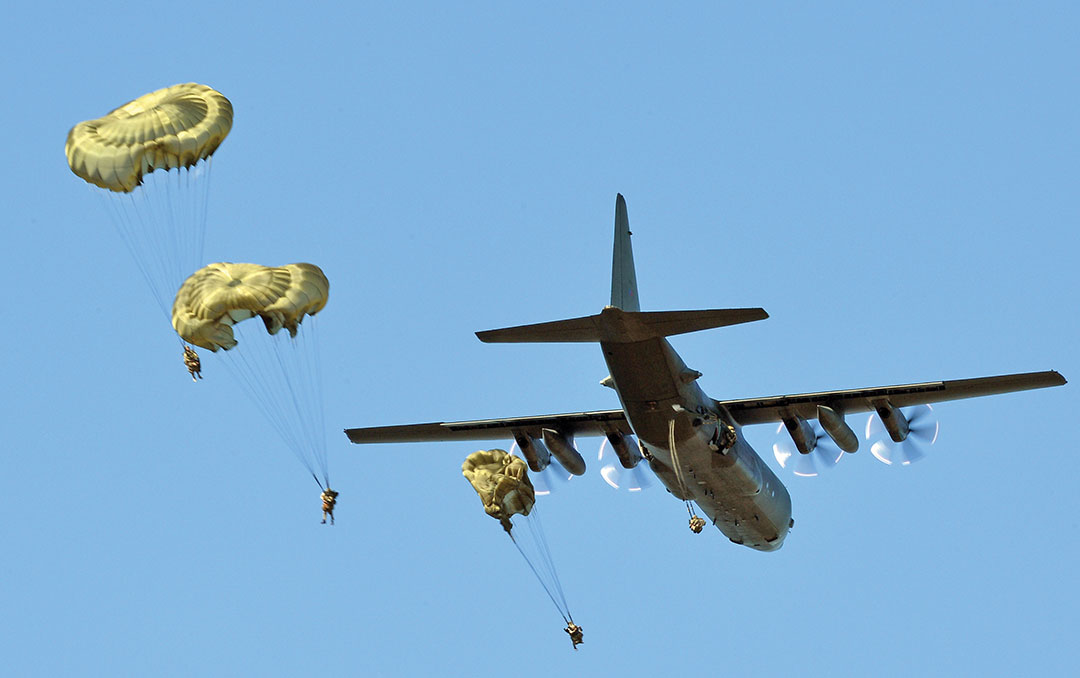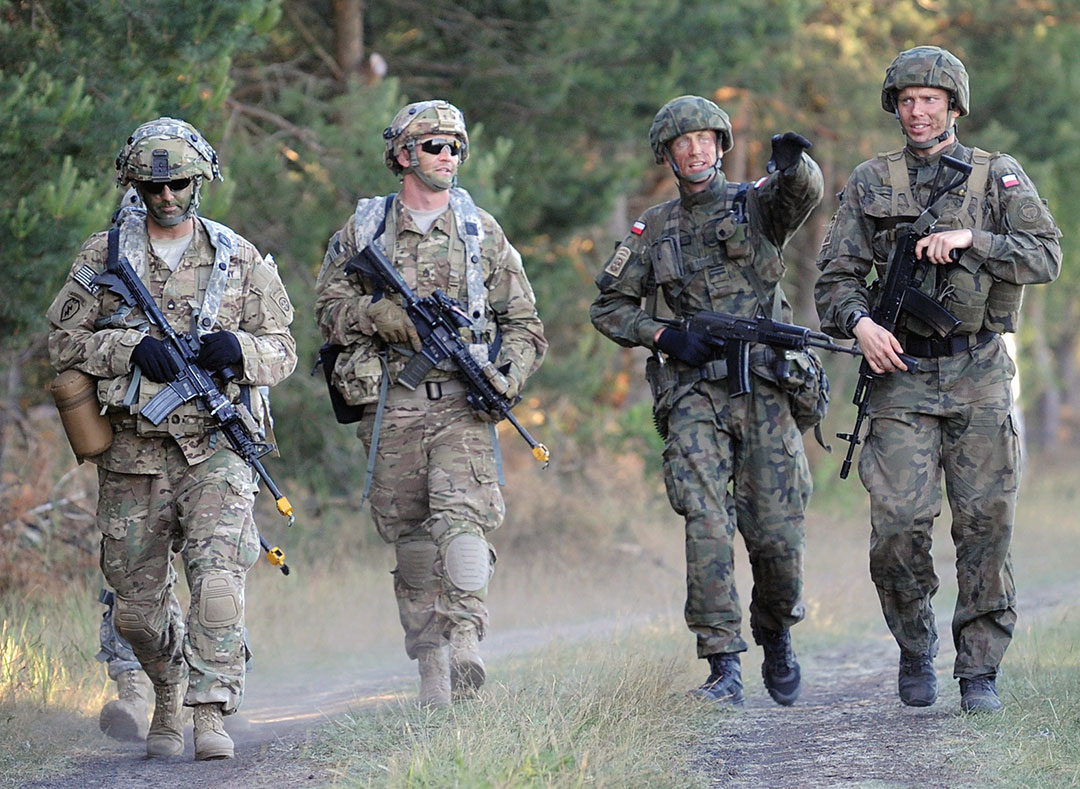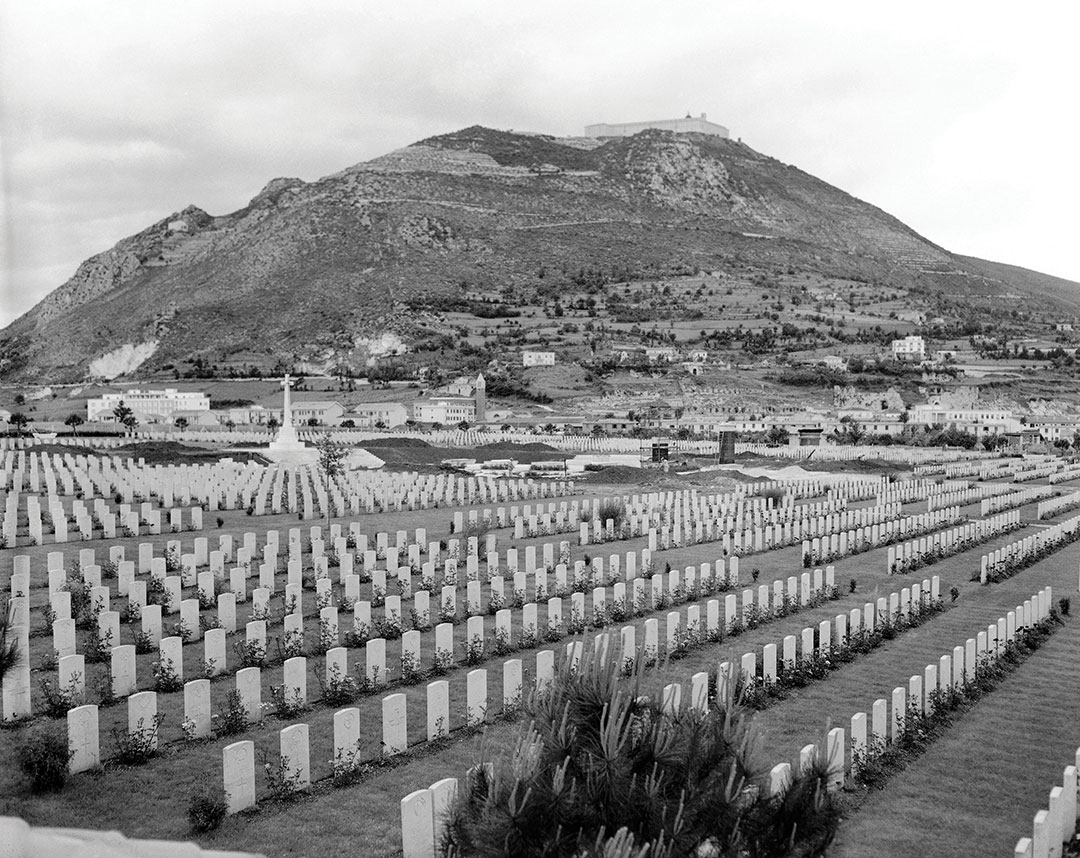Why a strong Poland is vital to U.S. national security
By Maj. Brigid K. Calhoun, U.S. Army
Throughout the summer of 2020, Poland steadily secured headlines across United States media outlets, renewing discussions about the nation’s history, its relationship with the U.S. and its role in NATO. The month of May that year marked the 75th anniversary of World War II’s end and the 100th anniversary of Polish-born Pope John Paul II’s birth. These consequential 20th century milestones recalled Poland’s decisive contributions to victory and freedom during World War II and the Cold War, providing timely historical context for significant defense developments in June.
Polish President Andrzej Duda visited the White House three weeks after U.S. President Donald Trump announced an intended 9,500 troop reduction in Germany, spurring debate about U.S. commitment to NATO and the possibility of a permanent U.S. base in Poland. In response, a bipartisan cohort of U.S. members of Congress argued that the troop reduction would destabilize Europe to Russia’s advantage. But Trump signaled that some of the 9,500 troops could be sent to Poland and even reaffirmed a September 2019 bilateral defense cooperation declaration during Duda’s visit. In February 2021, the administration of U.S. President Joe Biden announced a thorough force posture review and halted all European troop withdrawal plans. While some lawmakers and defense experts object to a permanent U.S. presence in Poland, the Eastern European nation may in fact be the United States’ most committed and most vital geostrategic ally in Europe. A strong, allied Poland remains just as important to U.S. and NATO interests in the 21st century as it did in the 20th century, especially as the post-Cold War world order has given way to great power competition and an uncertain post-COVID-19 global environment.

As a U.S. Army officer who served 3½ years in Europe training alongside NATO allies, both my official and leisure experiences in Poland left a profound impact on my worldview. Although far from a national security expert, I believe a historical examination of Poland’s centrality to U.S. and European security should guide national leaders and policymakers in confronting the challenges of great power competition today. Poland remains committed to its proud tradition of defending the Western world from military and cultural invasion. Poland’s contributions to U.S. national interests date back to the American Revolution, when generals Tadeusz Kosciuszko and Casimir Pulaski helped the Continental Army defeat the British. As the U.S. rightfully prioritizes the Indo-Pacific theater to counter a resurgent China, national security leaders must economize existing U.S. forces in Europe by positioning them where they can best protect NATO’s vulnerable flanks.
NATO’s Anakonda 2016 Exercise
At the beginning of June 2016, the 1st Battalion, 503rd Infantry Regiment (Airborne), and I traveled from our home base in Vicenza, Italy, to Ramstein Air Base in Germany to prepare for the largest NATO war game since the end of the Cold War: exercise Anakonda 16. We joined over 30,000 military members from 24 countries to conduct simultaneous operations across Poland to defeat a fictional enemy that had invaded the country from the east. This invasion invoked Article 5 of the NATO charter in which an attack against one nation constitutes an attack against all. Our final rehearsal took place June 6, and I felt honored to continue the spirit of U.S. Gen. Dwight D. Eisenhower’s “Great Crusade” with our NATO allies on the 72nd anniversary of D-Day.
As part of the 173rd Infantry Brigade Combat Team, the only American airborne brigade stationed in Europe, my battalion loaded planes in Ramstein and jumped into Poland hours later. Our mission was to seize Świdwin airfield in northwestern Poland, defeat the enemy force that occupied it and prepare for a follow-on mission, which our higher headquarters told us would likely be a nighttime helicopter air assault to seize the enemy-controlled town of Wędrzyn, 70 kilometers to the south. In reality, Świdwin airfield would be defended by a company-size group of 100 Polish soldiers role-playing the enemy.
Because battalion intelligence officers usually “dual hat” as exercise planners, I had been in contact with the commander of this Polish company to ensure the scenario would satisfy our units’ training objectives for the exercise. I was immediately impressed with the professionalism and dedication he exhibited in the planning phase, and my admiration only increased when I hit the ground and watched my battalion battle his company for control of the airfield. The Poles put up a tough fight, employing defensive and disruption tactics similar to what the Russian military used in its 2014 invasion of the Crimean Peninsula. The “Crimean model” had become the training standard for most of our NATO exercises, and the Poles took it very seriously due to their geography and history with Russia.
Seeing the open terrain of Poland during Anakonda put history into context for me. Northwest Poland boasts optimal open terrain for swift vehicular and armored maneuvers with very few natural obstacles. With only one brigade of U.S. tanks in Europe at the time, I could envision how quickly Russian vehicles and tanks could attack across Poland toward major NATO bases in Germany if a 21st century confrontation did occur. Given Russia’s conquest of Crimea just two years earlier, it was prudent for NATO to conduct an exercise of this size and scale, and in this location. The parallels between World War II and this exercise were not lost on the Russians, either; their media highlighted that the exercise occurred just weeks before the 75th anniversary of Operation Barbarossa, Hitler’s invasion of the Soviet Union, with whom Nazi Germany had been allied at the beginning of the war. More recently, Russian leaders and media routinely decry NATO exercises as provocative saber-rattling, some claiming that they could be used to mask a real invasion of Russia, as occurred with Barbarossa.

Anakonda 16 ultimately set conditions for expanded partnership with Poland and the Baltic states, which NATO solidified at its July 2016 Warsaw summit through the Enhanced Forward Presence (EFP) initiative. The EFP resulted in the assignment of four multinational battalions — separately led by Germany, Great Britain, Canada and the U.S. — to Poland, Estonia, Latvia and Lithuania, representing the largest addition to the NATO defense posture in a generation. In turn, Poland and the Baltic states honored this commitment by steadily increasing defense spending to meet NATO requirements. By 2019, they constituted four of only eight member states to spend the targeted 2% of their gross domestic product (GDP) on defense, according to the NATO secretary-general’s “2019 Annual Report.” By comparison, since 2013, Germany has spent less than 1.4% of its GDP on defense. Greece, Romania and Bulgaria also steadily increased defense spending between 2013-2019, with each nation exceeding the 2% goal in 2019. The 2017 U.S. National Security Strategy specifically listed burden-sharing with allies as a requirement under two of the four vital U.S. national interests, which explains why President Trump considered reallocating troops to nations that meet the NATO requirement.
The defense spending of Poland, Greece, Romania and Bulgaria, the countries which constitute the exposed eastern and southern flanks of Europe, reflects their shared assessment of and willingness to confront the threats posed by Russia, China and other adversaries. In September 2019, President Duda and then-U.S. Vice President Mike Pence signed an agreement strengthening 5G security guidelines, a move that signals Poland’s rejection of the Chinese-owned telecommunications company Huawei, whose equipment the Trump administration argued poses a grave security threat. Poland further demonstrated its commitment to NATO interoperability and military modernization in January 2020 by becoming the 10th NATO country to sign an agreement with the U.S. to purchase F-35 fighter jets. These commitments have also accompanied tentative, ongoing plans for the U.S. to establish a permanent military base in Poland to further deter Russian aggression.
Lessons from Monte Cassino and Krakow
A separate experience with the 1st Battalion, 503rd Infantry Regiment, in January 2017 reinforced my understanding of Poland’s commitment to its allies. We conducted a staff ride to Monte Cassino, the Benedictine abbey south of Rome that witnessed four long, bloody battles between January and May 1944. The Germans had fortified the abbey’s surrounding high ground as part of the Gustav defensive line to prevent an Allied penetration of Italy. The Allied forces, composed of U.S., British, Canadian, French and Polish Army Corps, launched a series of assaults from January to May to break through the Gustav line. The 2nd Polish Army Corps, led by Lt. Gen. Władysław Anders, successfully executed one of the final assaults against the Germans.
When the abbey fell to the Allies on May 18, 1944, Polish soldiers raised their nation’s flag over it. Today, on a hill northwest of the abbey rest 1,052 soldiers of the 2nd Polish Army Corps who gave their lives over five months fighting alongside their U.S. and British allies. The inscription on the cemetery’s memorial reads: “For our freedom and yours / We soldiers of Poland / Gave our soul to God / Our bodies to the soil of Italy and our hearts to Poland.” Sadly, Poland’s freedom would not be realized for almost another 50 years. In February 1945, just months after the final battle of Monte Cassino, the Yalta Conference decided Poland’s fate. Allied leaders ceded control of Poland to the Soviet Union; Soviet troops had already moved into the country and established a provisional pro-communist government. The Polish people would spend the next five decades resisting Soviet control.
Outside of military exercises, I was fortunate to visit Kraków, Poland, on leisure trips with my parents in February 2017 and December 2018. We toured the cathedral and castle on Wawel Hill, which boast a millennium of Polish national history and are symbolically analogous to America’s National Mall and Arlington National Cemetery. At the castle, we learned about Poland’s instrumental role in defeating European invaders at two decisive engagements in history: the Battle of Vienna in 1683 and the Battle of Warsaw in 1920. In both engagements, Polish troops stood as the last line of defense between Western civilization and enemies intent on destroying it.

The Associated Press
In April 1683, five months before the Battle of Vienna, the Austrian Habsburgs entered into an alliance with the Holy Roman Empire and Polish-Lithuanian Commonwealth in response to the increasingly aggressive and expansionist Ottoman Empire. The Habsburgs invoked the alliance’s assistance in September, after Vienna had been under Ottoman siege for two months. Polish King Jan Sobieski III quickly mobilized his forces, leading 20,000 cavalry to Vienna. Ultimately, Poland’s heroic cavalry charge during the battle led to decisive victory and prevented a probable Ottoman takeover of Europe. Less than 250 years later, at the Battle of Warsaw, Polish forces once again defended Europe from an eastern invasion. While the rest of Europe recovered from World War I, a newly independent Poland became the target of Vladimir Lenin’s Red Army in Russia’s civil war. Lenin and his military commanders, having consolidated power at home after a string of military victories, sought to expand the Bolshevik revolution further into Europe by attacking through Warsaw into Germany and eventually France. After suffering successive defeats against both Russian and Ukrainian Red Army factions, the Poles took a final stand at Warsaw and repelled the communist forces. The “Miracle at the Vistula” thus prevented the spread of communism across Europe in the immediate aftermath of World War I. Poland maintained its independence for 19 more years until Hitler’s army invaded in September 1939. Poland’s actions at Vienna and Warsaw echo the lessons of Monte Cassino about the nation’s historical willingness to stand and fight alongside and for allies at critical moments in Western history.
Conclusion
From our nation’s birth to the present day, Poland has steadfastly remained one of America’s most reliable allies. As repeatedly demonstrated throughout modern history, a strong Poland begets a strong Europe, both of which advance U.S. national security interests. From Vienna to Monte Cassino, Polish soldiers have safeguarded Western civilization against forces aiming to destroy it. Pope John Paul II, the first Slavic pontiff, perhaps best summarized their contributions during his June 1979 speech in front of Warsaw’s Tomb of the Unknown Soldier, declaring:
“In the ancient and contemporary history of Poland this tomb has a special basis, a special reason for its existence. In how many places in our native land has that soldier fallen! In how many places in Europe and the world has he cried with his death that there can be no just Europe without the independence of Poland marked on its map! On how many battlefields has that soldier given witness to the rights of man, indelibly inscribed in the inviolable rights of the people, by falling for ‘our freedom and yours!’”
As U.S. national security strategy justifiably “pivots to the Pacific” to address threats posed by China, policymakers and national security leaders must maintain America’s existing commitments to NATO and especially honor agreements with dedicated allies such as Poland. The Poles have repeatedly met NATO’s 2% of GDP guideline, are eager to host U.S. forces and reside in an ideal geographic position to respond to Russian threats. Opportunities abound for the U.S. and Poland to expand existing bilateral defense agreements to increase intelligence-sharing, military equipment and technology acquisitions, and professional military education exchange programs. Investing in a stronger alliance with Poland, a nation that has continuously fought and sacrificed for more than their own freedom, will strengthen NATO and best deter Russian aggression.


Comments are closed.